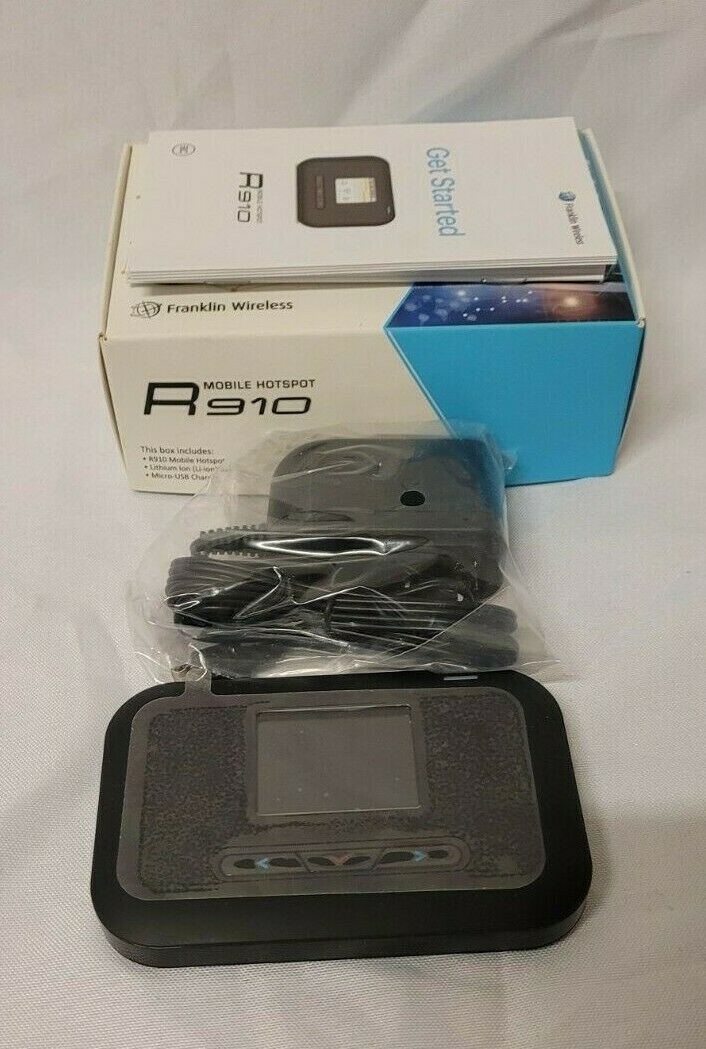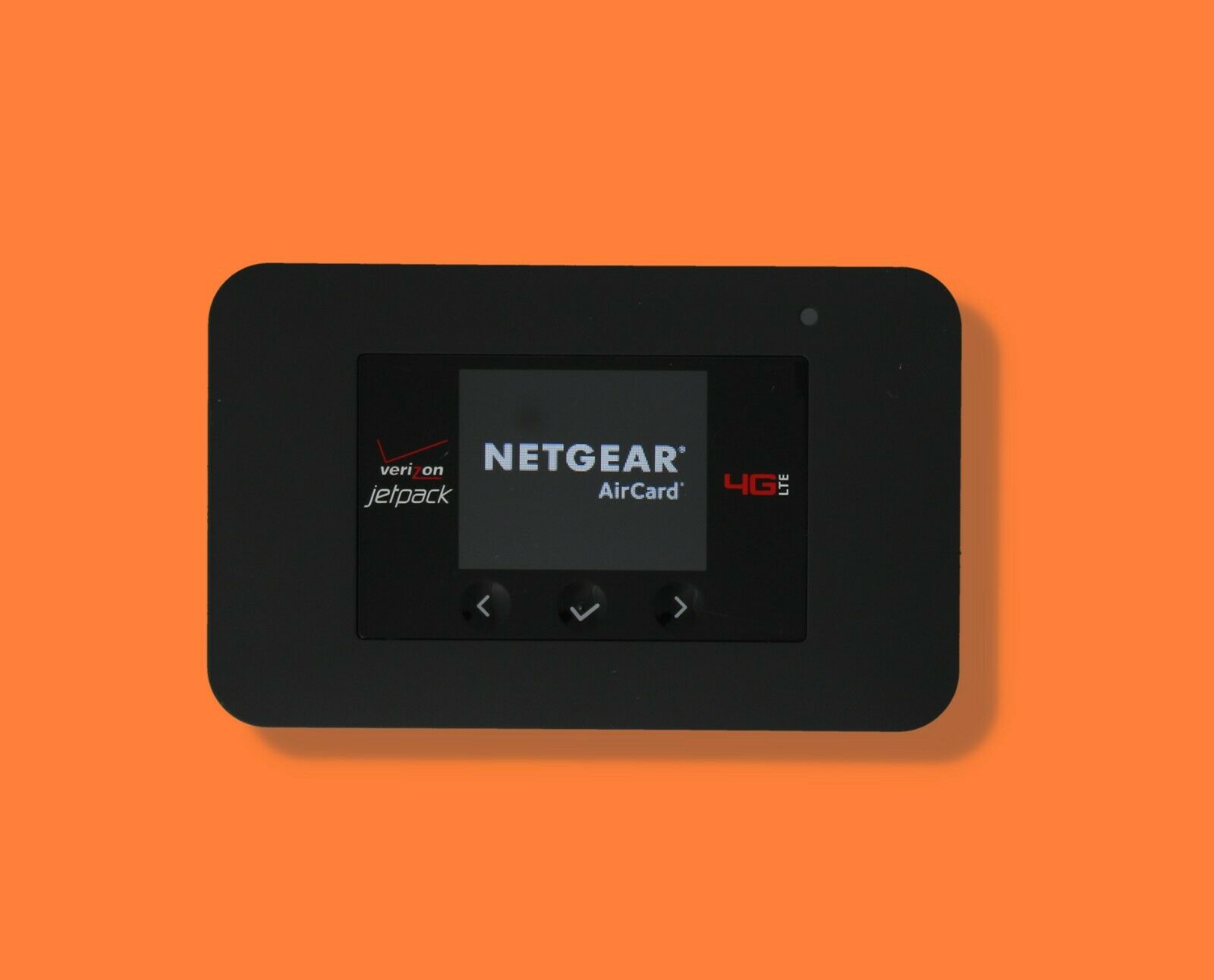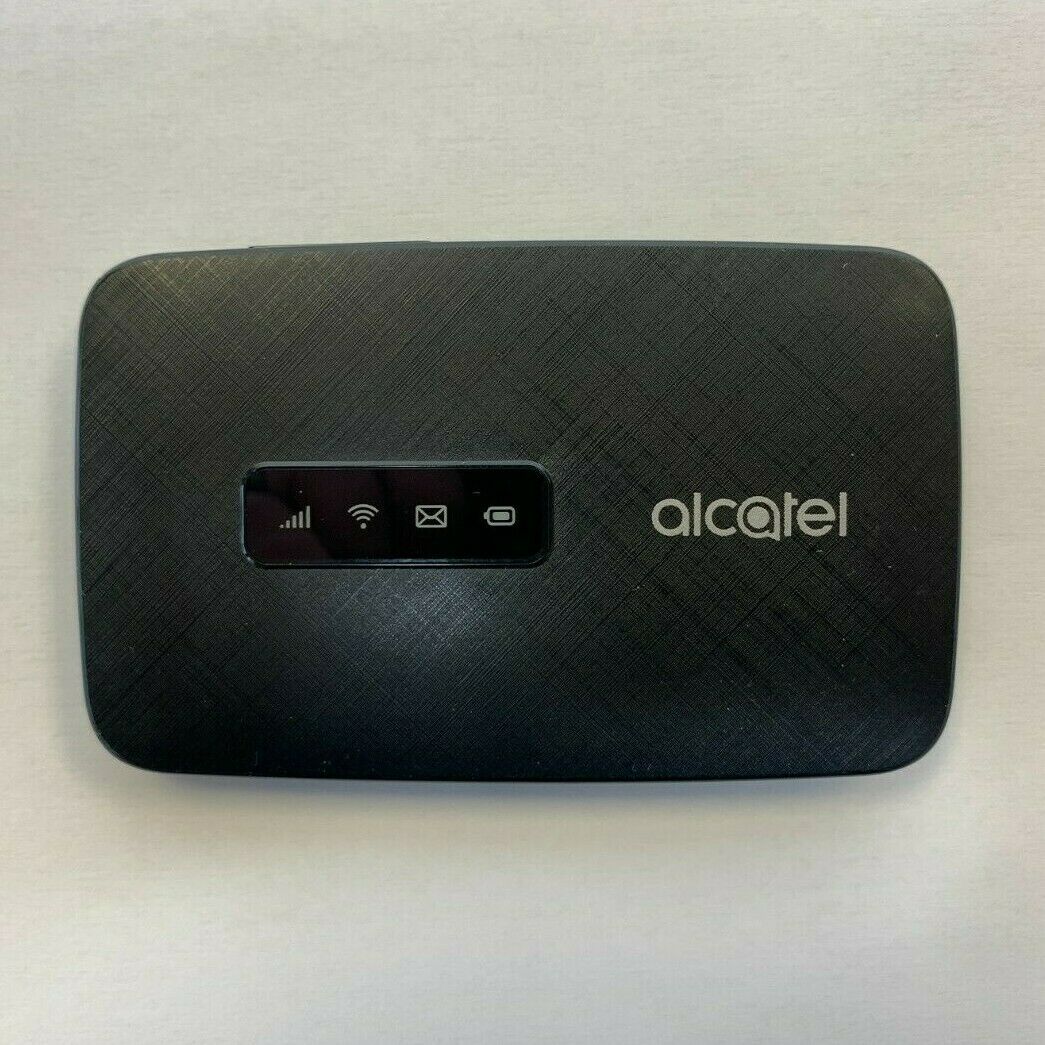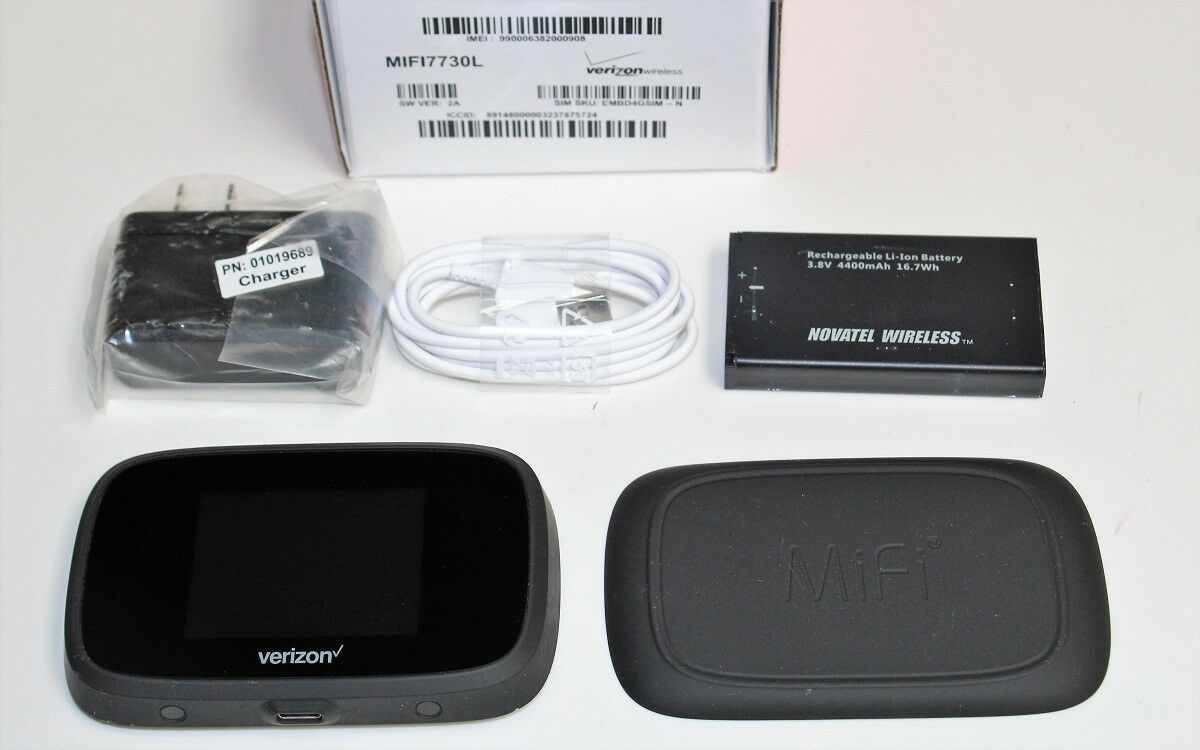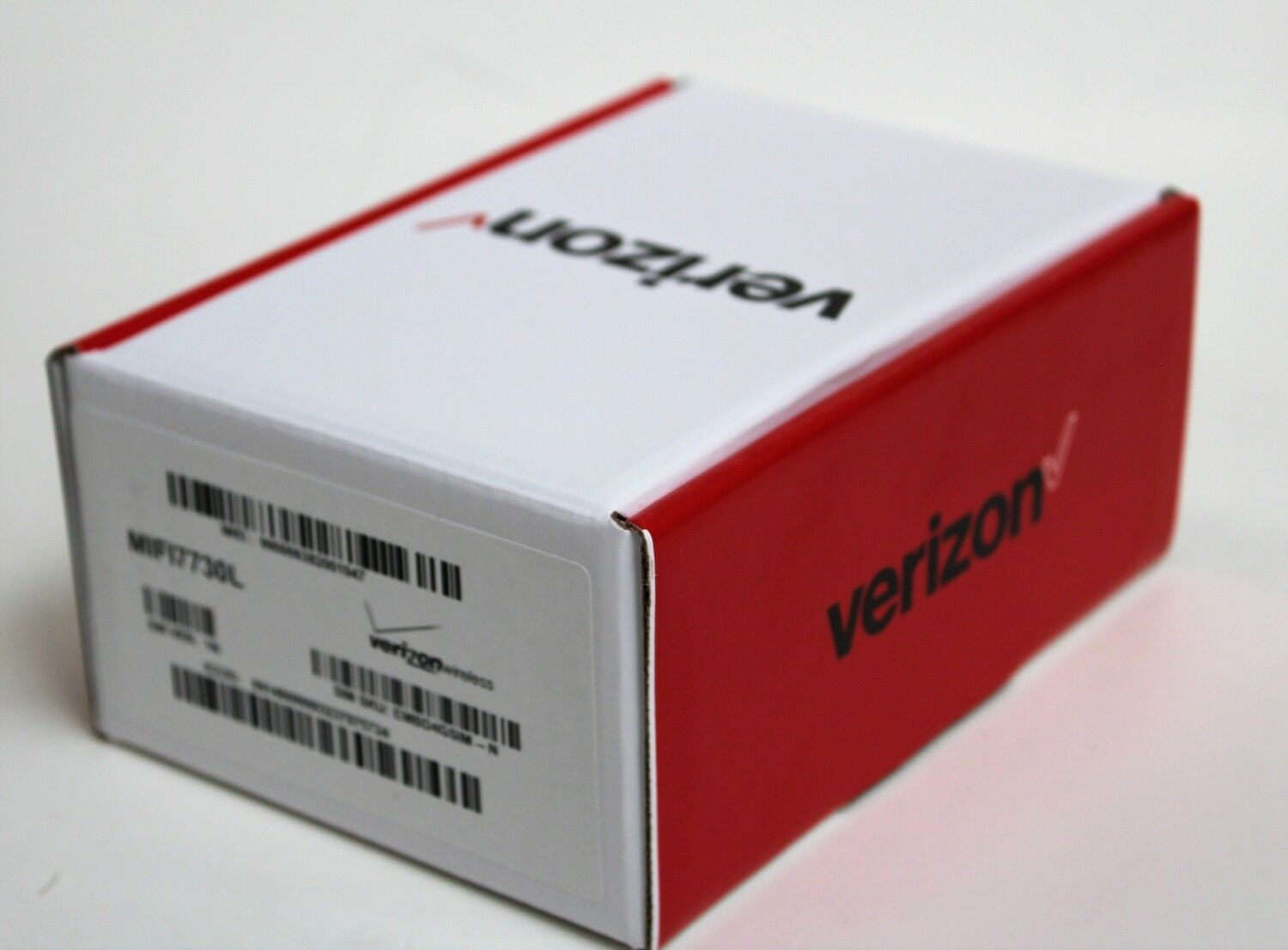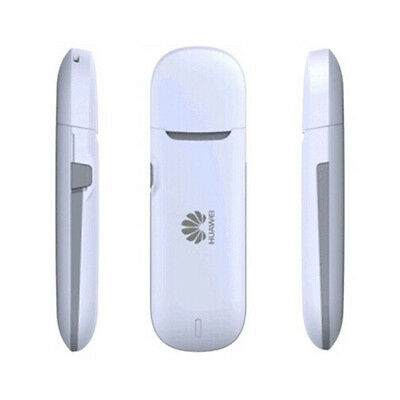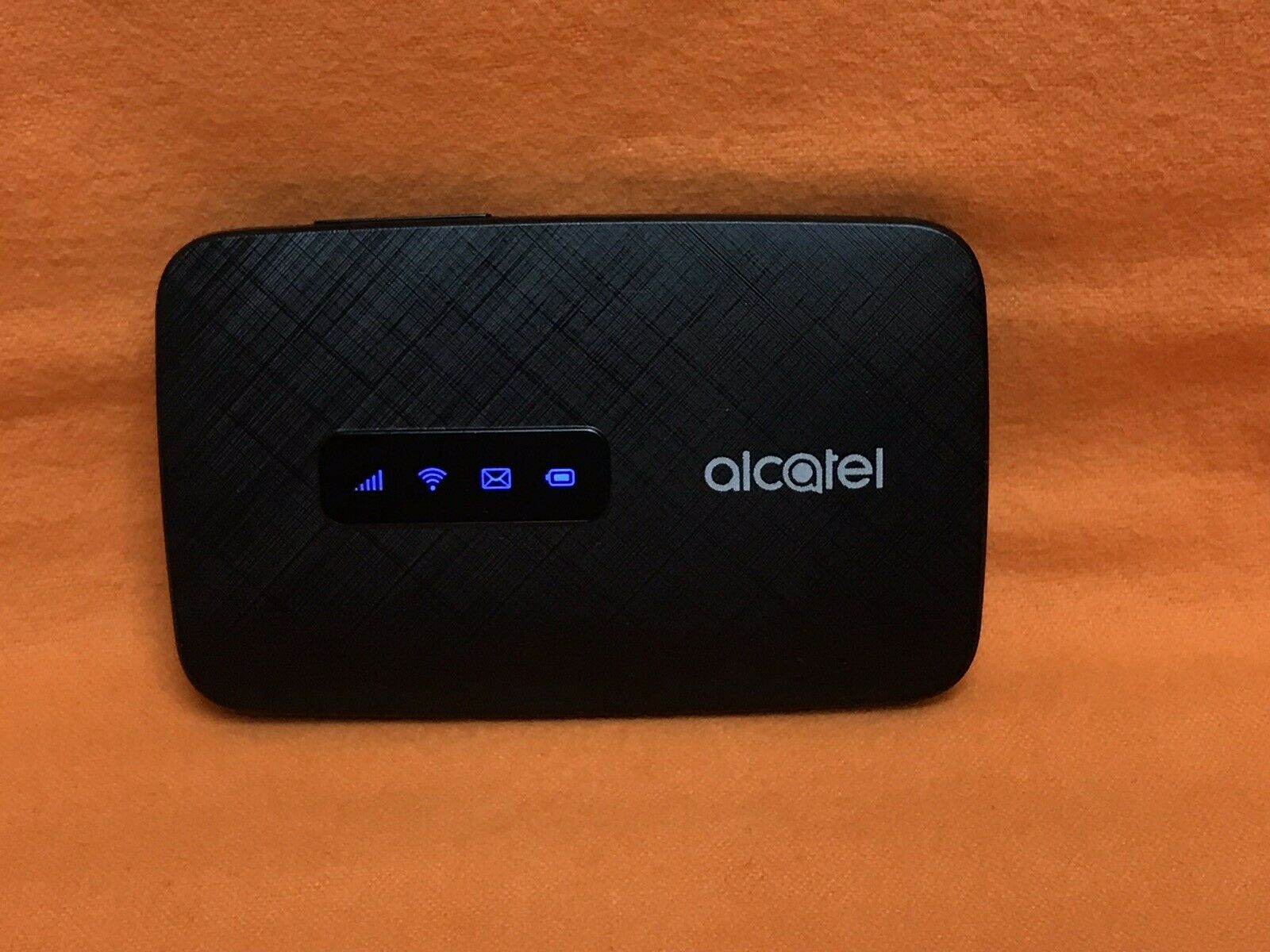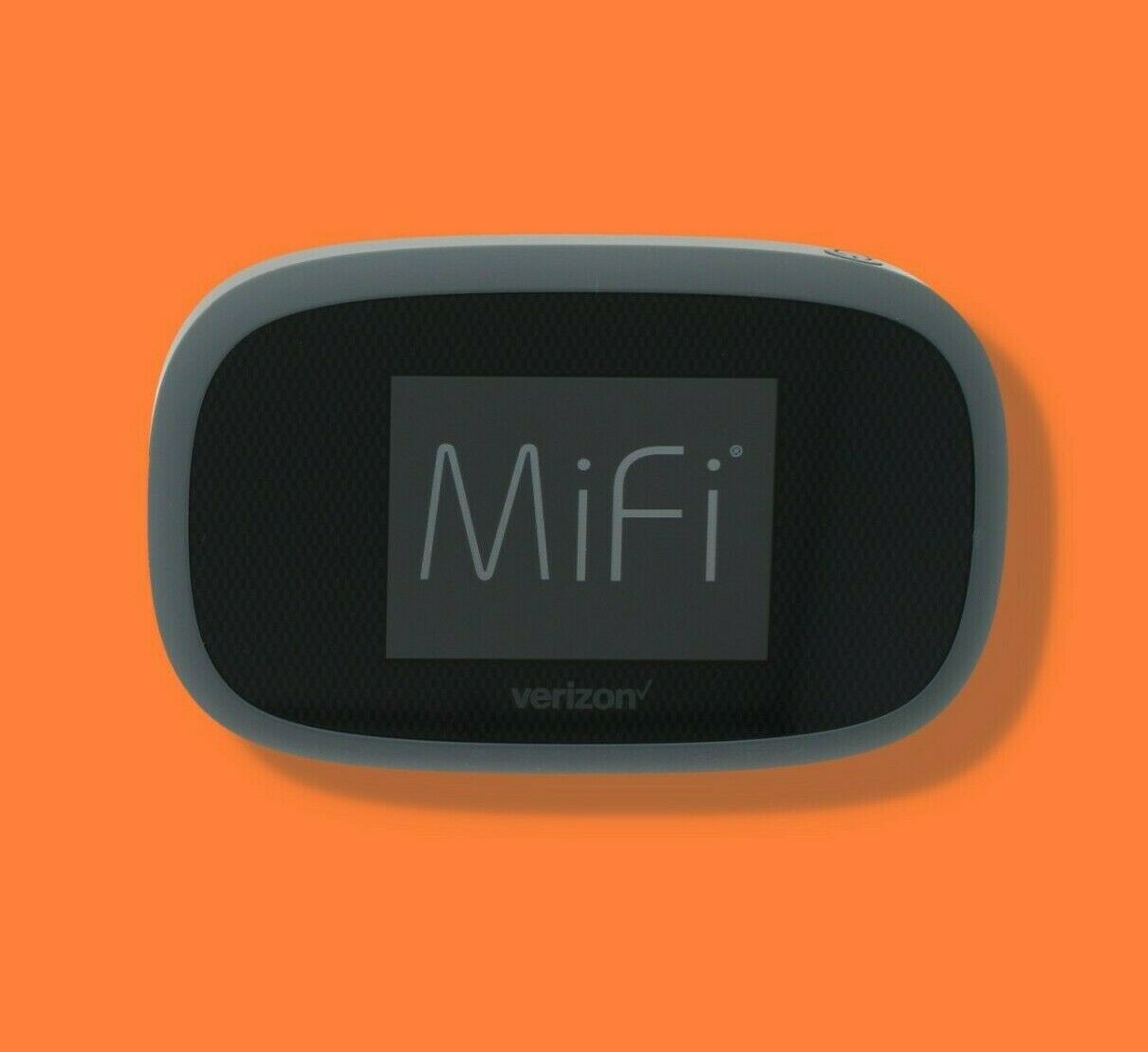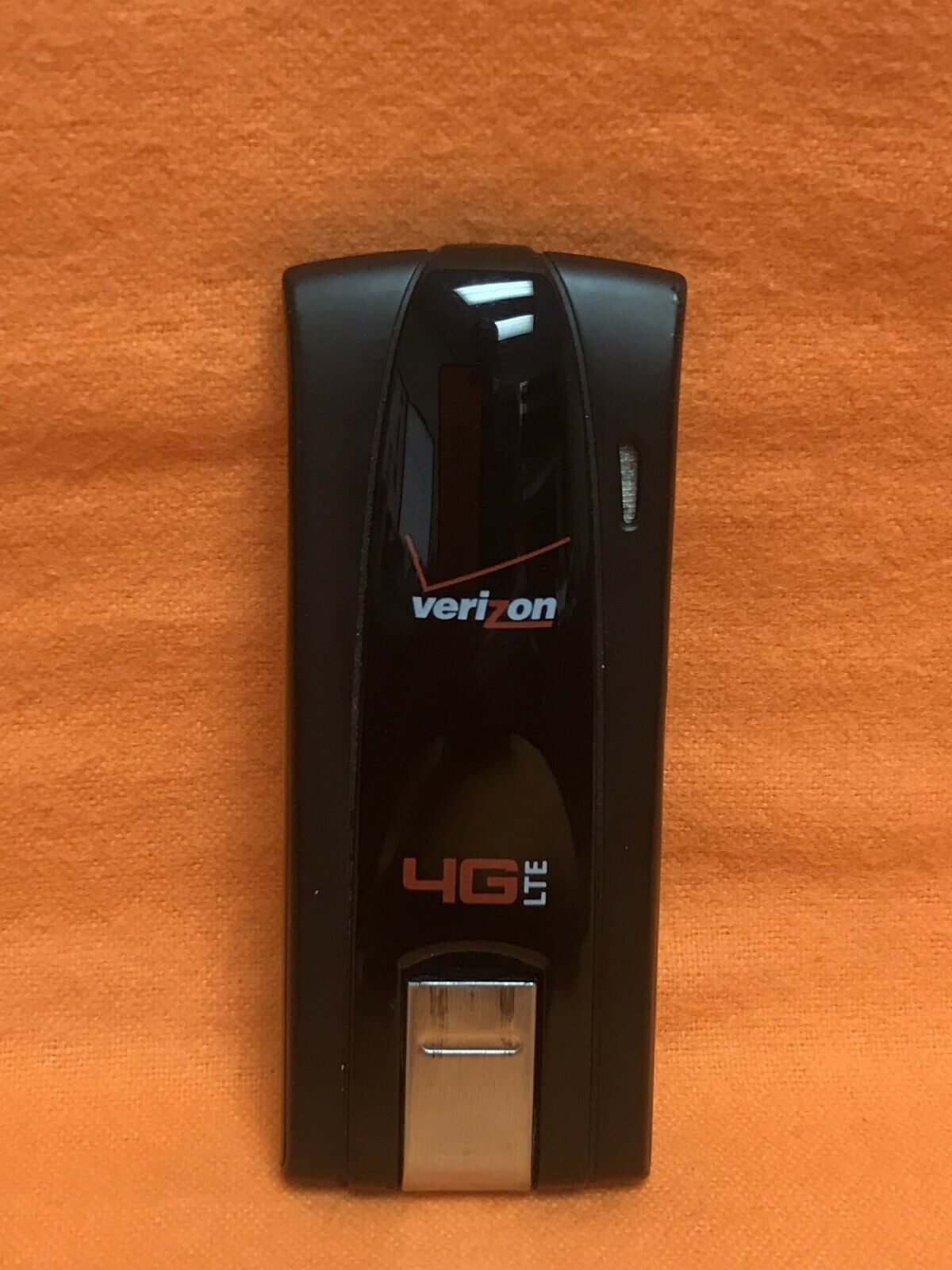-40%
SPRINT FRANKLIN WIRELESS R910 HOTSPOT 4G LTE Wi-Fi ROUTER MOBILE
$ 5.27
- Description
- Size Guide
Description
PRODUCT DESCRIPTIONSpecifications
Model Number:
Franklin R-910
# of Connected Devices:
10
Wi-Fi
Wi-Fi is a short-range local wireless networking technology use to connect devices together. While the technology is often used to also deliver an internet connection, the word itself does not necessarily mean internet access.
Wi-Fi also has multiple meanings and contexts when we're talking about mobile internet.
You can create your own local Wi-Fi network using a smartphone, hotspot device or router. Your internet source for these networks might be cellular, satellite or another Wi-Fi network.
But more commonly when we're using the word Wi-Fi as a way to get online while traveling, we're referring to a Wi-Fi network hosted by someone else - such as a campground, marina, cafe or library. Most often, the internet source for these access points is cable or DSL.
Term details
" target="_blank" style="box-sizing: inherit; background-color: transparent; transition: color 0.2s ease-in-out 0s, background-color 0.2s ease-in-out 0s; font-weight: inherit; color: rgb(73, 73, 73) !important; text-decoration-line: none !important; border-bottom: 1px dotted rgb(221, 51, 51) !important;">Wi-Fi
USB
Tethering
Using a USB cable to directly attach the phone/tablet to a computer or router. This allows other devices to share the cellular data connection to get online .
Usage of tethering (or mobile hotspot - which is the same concept, but over wireless connections) may have restrictions on some cellular data plans.
Term details
" target="_blank" style="box-sizing: inherit; background-color: transparent; transition: color 0.2s ease-in-out 0s, background-color 0.2s ease-in-out 0s; font-weight: inherit; color: rgb(73, 73, 73) !important; text-decoration-line: none !important; border-bottom: 1px dotted rgb(221, 51, 51) !important;">Tethering
Support:
Not confirmed
Supported Networks and Bands:
LTE
The dominant 4G technology is known as LTE, which stands for Long-Term Evolution.
Term details
" target="_blank" style="box-sizing: inherit; background-color: transparent; transition: color 0.2s ease-in-out 0s, background-color 0.2s ease-in-out 0s; font-weight: inherit; color: rgb(73, 73, 73) !important; text-decoration-line: none !important; border-bottom: 1px dotted rgb(221, 51, 51) !important;">LTE
Bands: 25, 26, 41 (aka "Sprint Spark") - hardware also supports 2, 4, 5, 12
3G Fallback: Yes
LTE-Advanced
The LTE platform was designed to evolve to support faster and more advanced networks. The design goal for LTE-A is to enable cellular networks to support speeds up to 100Mbps for mobile users, and up to 1Gbps for stationary users.
Term details
" target="_blank" style="box-sizing: inherit; background-color: transparent; transition: color 0.2s ease-in-out 0s, background-color 0.2s ease-in-out 0s; font-weight: inherit; color: rgb(73, 73, 73) !important; text-decoration-line: none !important; border-bottom: 1px dotted rgb(221, 51, 51) !important;">LTE-Advanced
Carrier Aggregation
Carrier aggregation is a core LTE-A technology that combines multiple channels from different chunks of spectrum to make a higher bandwidth virtual channel that can support faster speeds.
Most modern cellular modems have embraced this technology, and support for carrier aggregation is absolutely critical to achieving peak cellular performance.
Older LTE Cat-3 and most Cat-4 modems however are limited to connecting to just one single channel at a time.
Term details
" target="_blank" style="box-sizing: inherit; background-color: transparent; transition: color 0.2s ease-in-out 0s, background-color 0.2s ease-in-out 0s; font-weight: inherit; color: rgb(73, 73, 73) !important; text-decoration-line: none !important; border-bottom: 1px dotted rgb(221, 51, 51) !important;">Carrier Aggregation
:
Yes
MIMO
MIMO stands for Multiple-Input, Multiple-Output – for wireless networks, this means using multiple antennas working together to increase data speeds and signal reception.
MIMO technology is central to the latest Wi-Fi and LTE cellular standards - and most devices can take advantage of at least two antennas for doubling speeds.
Term details
" target="_blank" style="box-sizing: inherit; background-color: transparent; transition: color 0.2s ease-in-out 0s, background-color 0.2s ease-in-out 0s; font-weight: inherit; color: rgb(73, 73, 73) !important; text-decoration-line: none !important; border-bottom: 1px dotted rgb(221, 51, 51) !important;">MIMO
Support
: 2x2
LTE Performance Category:
Category 4
(Max Theoretical Speed: 150Mbps Down / 50Mbps Up)
Cellular
Cellular data uses the same technology that allows smartphones to make calls, receive texts or browse the web. A smartphone, tablet, hotspot device or cellular router can convert cellular signal into Wi-Fi or ethernet to get laptops and other devices online - providing the data plan allows for the hotspot feature.
Cellular carriers (Verizon, AT&T, T-Mobile or Sprint) deploy equipment where they have customers that transmit a long range wireless signal, ranging from a mile to dozens of miles. They design their footprint so that there is overlap in their signal, creating 'cells' that make up their coverage map.
Term details
" target="_blank" style="box-sizing: inherit; background-color: transparent; transition: color 0.2s ease-in-out 0s, background-color 0.2s ease-in-out 0s; font-weight: inherit; color: rgb(73, 73, 73) !important; text-decoration-line: none !important; border-bottom: 1px dotted rgb(221, 51, 51) !important;">Cellular
Antenna
An antenna takes electrical input and broadcasts it out as radio waves, or receives radio waves and provides an electrical signal to a device to utilize that signal.
An antenna needs to be designed and carefully tuned for the frequencies that it needs to support, and they come in a variety of specifications for gain.
In terms of mobile internet, antennas are used for cellular, Wi-Fi and satellite devices. They can be built directly in devices, or be externally attached via ports.
Term details
" target="_blank" style="box-sizing: inherit; background-color: transparent; transition: color 0.2s ease-in-out 0s, background-color 0.2s ease-in-out 0s; font-weight: inherit; color: rgb(73, 73, 73) !important; text-decoration-line: none !important; border-bottom: 1px dotted rgb(221, 51, 51) !important;">Antenna
Ports:
None
Other Ports
: micro USB
Wi-Fi Technology / Frequencies:
802.11
The IEEE 802.11 set of technical standard is the formal name for the wireless technology commonly referred to as Wi-Fi.
The 802.11 standard comes in an alphabet soup of flavors. Going into the future, 802.11 will be more commonly referred to as simply 'Wi-Fi' and then a generation number (such as 'Wi-Fi 5').
Term details
" target="_blank" style="box-sizing: inherit; background-color: transparent; transition: color 0.2s ease-in-out 0s, background-color 0.2s ease-in-out 0s; font-weight: inherit; color: rgb(73, 73, 73) !important; text-decoration-line: none !important; border-bottom: 1px dotted rgb(221, 51, 51) !important;">802.11
b/g/n - 2.4GHz , 802.11ac - 5GHz
Battery:
Claimed Battery Life:
12 hrs usage / 27 hrs standby
Can Be Powered Without a Battery
: Unknown
Battery Part #:
V515176AR
Battery Replacement Purchase
Dimensions:
3.46" x 2.62" x 0.47" / 3.5 oz
SIM
SIM stands for Subscriber Identity Module. The tiny SIM card is mandated on GSM and LTE networks and identifies you to the network.
A SIM card is what holds your cellular plan and number. Swapping your SIM into a new phone or device moves your service and phone number to that new device.
SIMs come in a range of sizes – Full-Size is extinct, but Mini-SIM, Micro-SIM, and Nano-SIM are all in common circulation.
There are also eSIMs which are built into the device itself are not removable.
Term details
" target="_blank" style="box-sizing: inherit; background-color: transparent; transition: color 0.2s ease-in-out 0s, background-color 0.2s ease-in-out 0s; font-weight: inherit; color: rgb(73, 73, 73) !important; text-decoration-line: none !important; border-bottom: 1px dotted rgb(221, 51, 51) !important;">SIM
Card Type:
Nano
Retail Price:
0
